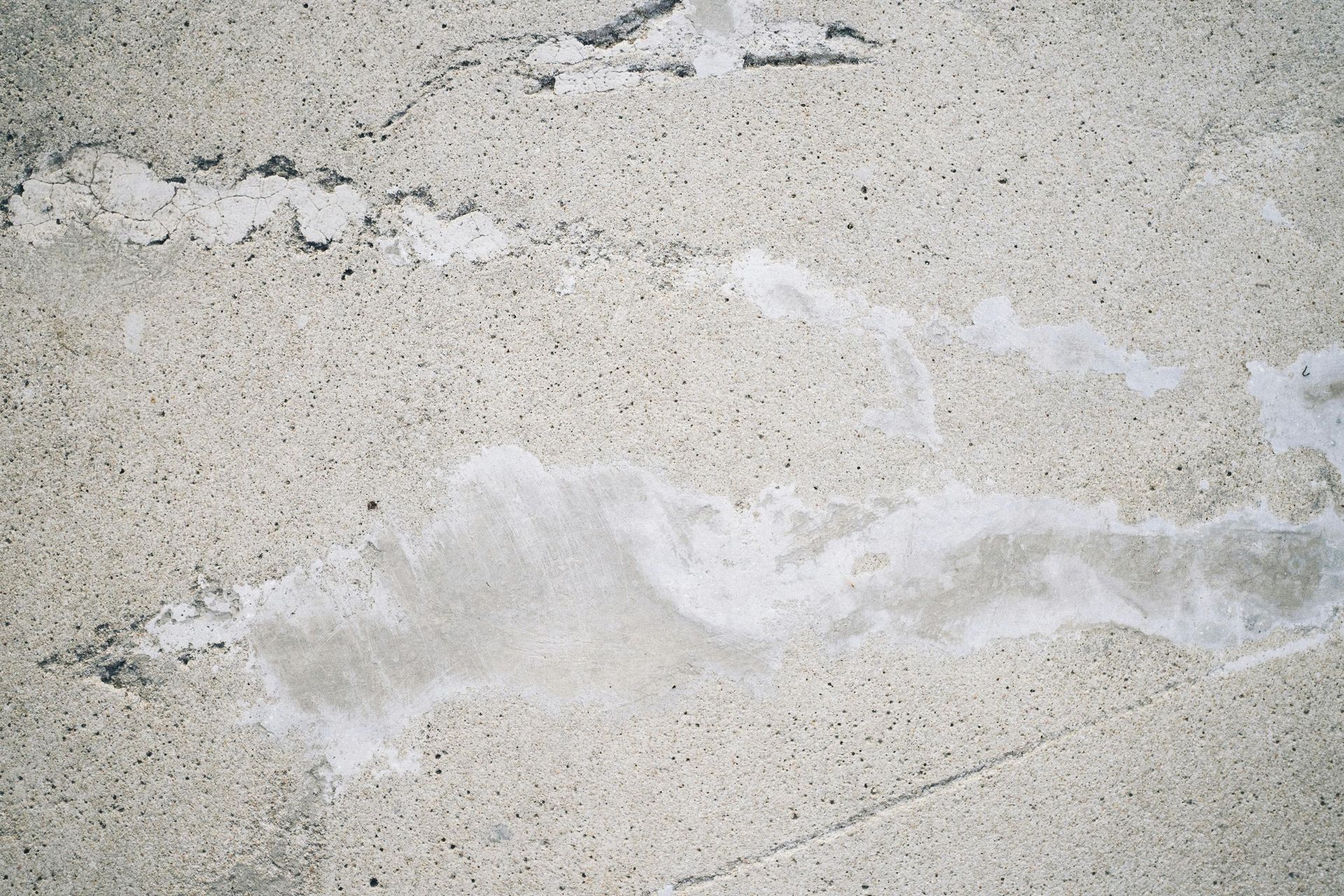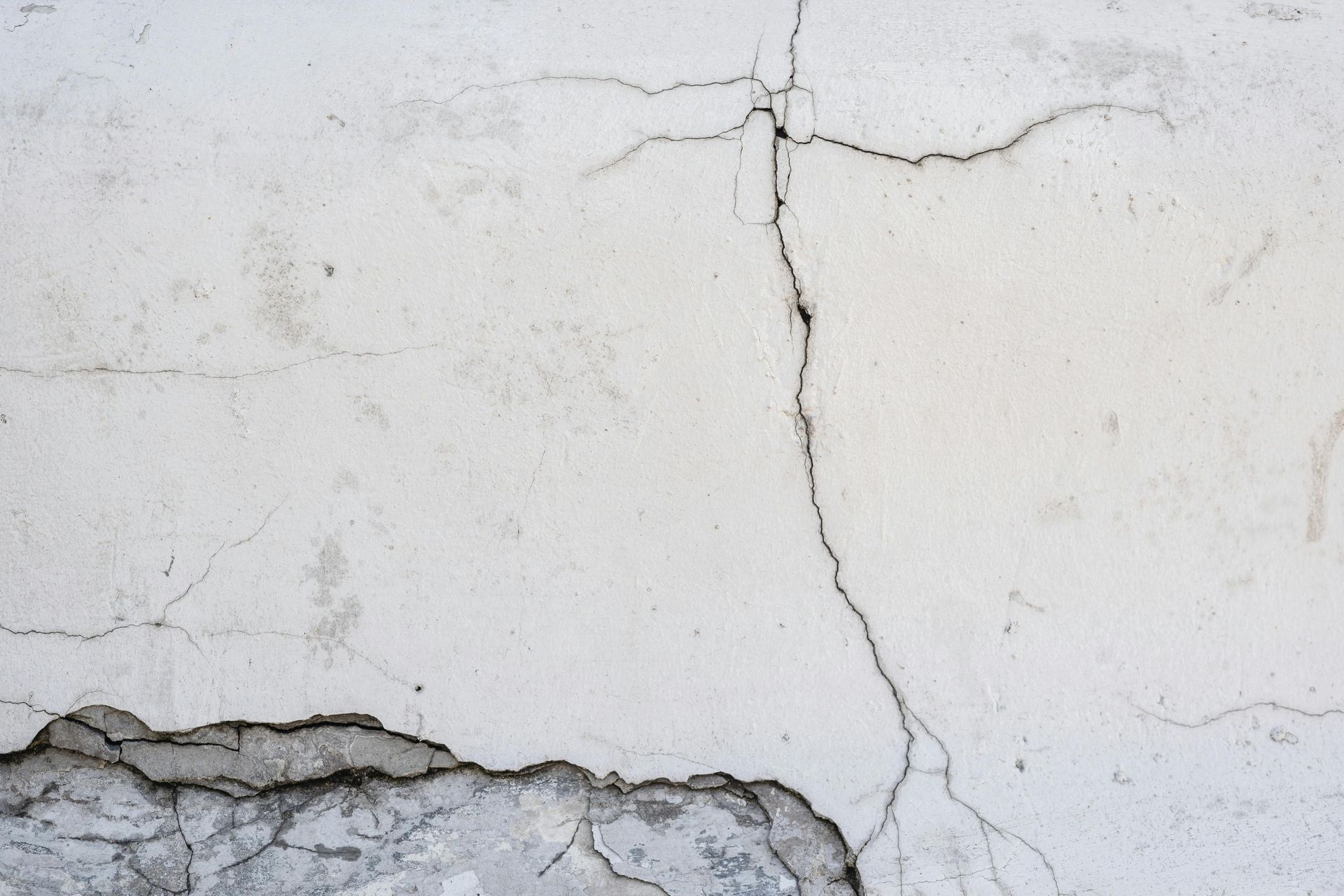Cracks in your stucco might seem minor, but they can signal deeper structural problems. Knowing the difference between a simple stucco repair and a serious foundation issue can save you time, money, and stress.
Hairline Cracks
Tiny cracks, often thinner than 1/16 of an inch, don’t usually cause harm. Natural settling, temperature changes, or the drying process of the stucco create these small fractures. They tend to form around windows, doors, or corners where stress builds up.
You can easily fix these cracks with a fresh coat of paint or a stucco patch. However, if new ones keep appearing, it’s a sign to look deeper into the issue.
Patterned Cracks
When cracks form in a spiderweb pattern or straight grid lines, they often reveal application mistakes.
- Spiderweb cracks show that the stucco mix contained too much water or didn’t cure properly.
- Grid-like cracks mean the base layer didn’t dry long enough before applying the next coat.
These cracks don’t always indicate structural damage, but they allow water to seep in if left untreated. Fixing them requires removing the faulty stucco and applying it correctly.
Diagonal Cracks
Cracks running diagonally across walls often indicate movement in the foundation. This can happen due to shifting soil, improper drainage, or natural settling. While some movement is normal, wide cracks (larger than 1/8 of an inch) suggest deeper concerns.
If these cracks appear near windows or doors and keep growing, your home may need more than stucco repair. A foundation specialist can assess whether structural reinforcements are necessary.
Stair-Step Cracks
Cracks that resemble a stair-step pattern along brick or concrete block walls are a major warning sign. These often point to serious foundation shifting or settling. If you see gaps forming or doors sticking, it’s time to call an expert.
Ignoring these cracks can lead to more severe structural problems, requiring extensive (and costly) foundation repairs. Addressing them early can prevent further damage to your home.
Moisture Damage and Stucco Cracks
Water poses a serious threat to stucco. Dark stains, mold growth, or bubbling paint near cracks often mean moisture is trapped behind the surface. This happens when:
- The stucco lacks proper sealing.
- Poor drainage allows water to collect around the home.
- Water seeps through tiny cracks and expands with temperature changes.
Fixing these cracks takes more than a simple patch. You need to address the root problem—whether it's sealing issues or drainage failures—to stop future damage.
When to Call a Professional
Not all cracks require expert help, but some signal deeper issues. If you suspect underlying damage, a
professional can assess whether the problem is cosmetic or structural. Ignoring serious cracks can lead to more costly repairs down the road.
Fixing the Problem the Right Way
Superficial cracks can be patched and painted for a seamless finish. When deeper issues are present, targeted repairs prevent further deterioration. Properly addressing installation flaws, moisture problems, or foundation shifts ensures your stucco remains durable and attractive for years.
Transform your home with expert stucco repair. At
McClure Plaster & Paint, Inc., we ensure durable, flawless finishes that protect and enhance your space. Whether it’s a minor fix or a structural concern, our skilled team has you covered.
Contact us today for a free estimate!



